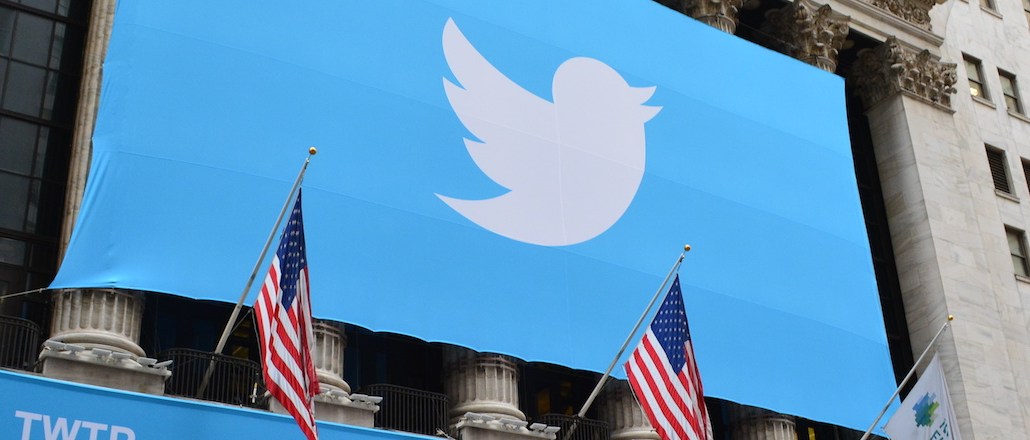Join us Dec. 1-3 in New Orleans for the Digiday Programmatic Marketing Summit

Every business, be it a brand or a platform, needs to tell a story about itself. Unfortunately Twitter has become beholden to a narrative it constructed but no longer wants to emphasize.
Twitter’s growth rate may have exceeded Wall Street’s expectations on Tuesday, but its year-to-year growth in monthly active users continued to decline, from 25 percent in the first quarter to 24 percent in the second quarter, according to the company’s quarterly filings. With this trend expected to continue, eMarketer predicts Twitter’s user growth will continue to plateau through 2018 in all regions worldwide, Twitter has begun emphasizing how its cultural influence extends far beyond the bounds of Twitter.com.
During Tuesday’s earnings call, Twitter CEO Dick Costolo made a point to highlight Twitter’s reach and impact beyond its own and operated properties, referencing a single World Cup match that generated 2 billion Twitter impressions outside of Twitter.
While Twitter’s influence narrative is essentially true, it doesn’t do much to help Twitter’s pitch to investors. Twitter has become an integral part of news and entertainment media; whether it be anchors referencing tweets during broadcasts, correspondents tweeting dispatches from the ground or publications embedding tweets into digital articles, tweets can indeed be found in myriad places that are not, in fact, Twitter. But rarely do promoted tweets from brands — the ad products that keep Twitter afloat — have reach beyond Twitter. Meaning financially, the point is moot.
“That helps NBC and CNN. It doesn’t do a hell of a lot for Twitter advertisers,” David Berkowitz, CMO of digital agency MRY, told Digiday.
And in the rare case a brand-related tweet does garner attention outside of Twitter, Twitter doesn’t necessarily see a monetary benefit. Take Ellen Degeneres’s headline-generating selfie tweet, which Publicis CEO Maurice Levy speculated was worth between $800 million and $1 billion to client Samsung. Levy said Publicis orchestrated having Degeneres take the selfie and tweet the selfie from a Samsung phone. Twitter being able to fetch up to $1 billion for a single tweet would expel any doubt about the health of its business. Except Twitter was left out of that transaction; if a marketer pays a celebrity hundreds of millions to tweet on its behalf and the tweet goes viral without paid promotion on Twitter, Twitter generates no revenue from it.
“The user growth problem is overblown,” Brian Wieser, senior analyst at equity research firm Pivotal told Digiday. “The issue is that management prioritized this aspect of their business and has so far not changed what seemed an inevitable outcome around decelerating growth of users.”
It’s an inherent, somewhat unavoidable downside of being a free-to-use platform. But it’s also a missed opportunity for a company that’s trying to monetize its off-platform influence.
Matthew Wurst, general manager of social at digital agency 360i, the company responsible for Oreo’s similarly popular tweet during the Super Bowl in February 2013, said “most social content has limited reach beyond the walls of where it is published.”
“Outliers, like Ellen [Degeneres] and Oreo, have helped increase awareness of what a platform like Twitter can do, but neither of those successes happened without television or PR support,” Wurst added.
Media buyers remain bullish on Twitter despite these limitations, though, saying that while Twitter’s user base may be smaller than those of other platforms (namely Facebook), it affords a generally deeper connection between a brand and its followers.
This enthusiasm is reflected in Twitter’s revenue growth which reached $312 million this quarter, a 124 percent increase from the same quarter a year before and a jump from the $250 million in revenue it generated in the first quarter this year.
“It’s still a unique and evolving platform and that size isn’t the core metric,” Mediacom managing partner Michael Lampert told Digiday. “Twitter’s audience products and ability to insert brands message into conversations in real time, say when a specific TV show is on and a user tweets about the content, results in engagement that is very valuable.”
Much of Twitter’s ability to expand its ad business beyond its platform proper rests on MoPub, the mobile ad network Twitter acquired in September 2013 and is now using MoPub to serve ads across different mobile apps. Twitter hopes that these ads will not only help its ads business, but help Twitter onboard more users.
Berkowitz said Twitter’s user growth problem isn’t due to lack of exposure, but because the platform remains inscrutable to many laypeople. Twitter toyed with new sign up features during the World Cup as an experiment in making the platform more accessible.
“If Twitter is used in newscasts and online articles, then why aren’t more people using it?” he asked.
More in Media

Marketers move to bring transparency to creator and influencer fees
What was once a direct handoff now threads through a growing constellation of agencies, platforms, networks, ad tech vendors and assorted brokers, each taking something before the creator gets paid.

Inside The Atlantic’s AI bot blocking strategy
The Atlantic’s CEO explains how it evaluates AI crawlers to block those that bring no traffic or subscribers, and to provide deal leverage.

Media Briefing: Tough market, but Q4 lifts publishers’ hopes for 2026
Publishers report stronger-than-expected Q4 ad spending, with many seeing year-over-year gains.





